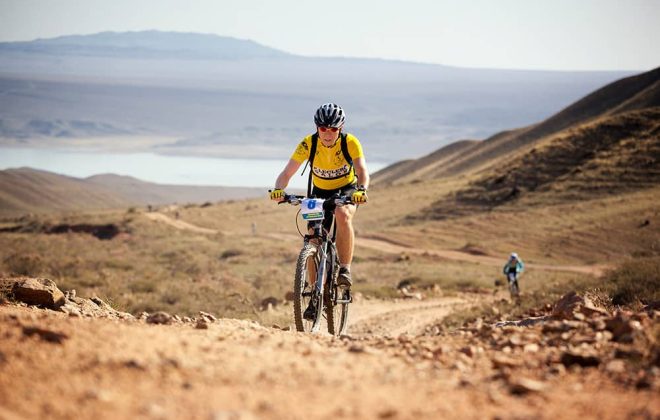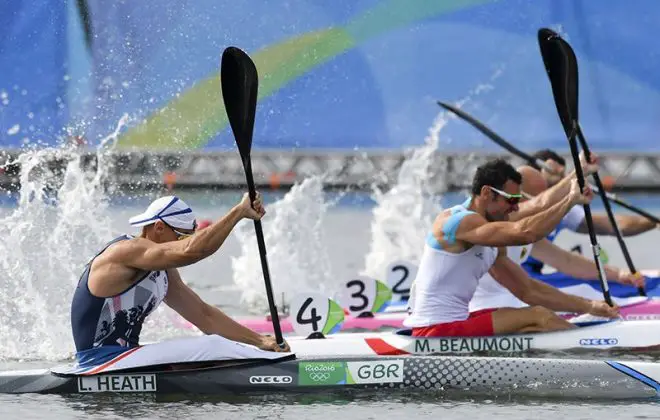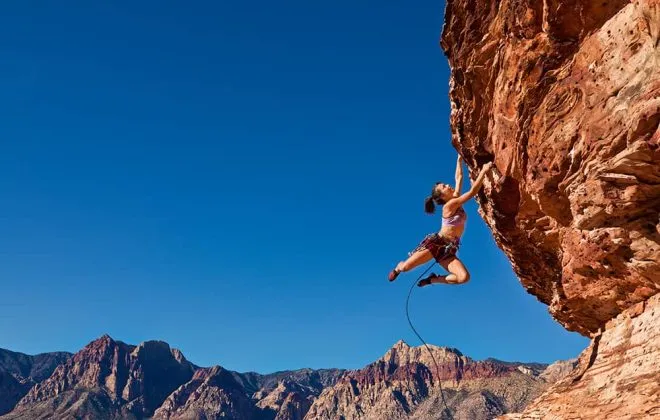Triathlon Strength Training – How To Plan For Base Phase & Beyond
As multisport athletes we try to accumulate as much swim, bike and run hours as possible. However, triathlon strength training can be a very effective way to build endurance as well. Not to mention that it also helps to build power and support the body during the gruelling training schedule.
Not all athletes are fans of strength and conditioning training, though. Some don’t do it because of the fear of putting on too much muscle weight and getting slower. Others are concerned they will get injured. And then there are those who are simply too focused on aerobic training and don’t have extra time.
We’re crazy enough to do 3 sports already. Why take up another one?
While some triathletes get the ‘Fall blues’ at the end of the season and feel a little uninspired during colder months, top athletes actually use that time to gain the edge.
If done right, strength training can be the secret sauce that pushes athlete’s performance to the next level. And not only triathlete’s. And for that base period (or pre-season) is the best time. It’s virtually the only time of the season when athletes can devote a lot of training time to building power which will later translate to speed.
So, what makes strength training so great for triathletes?
Triathlon strength training
To strength train or not to strength train is a question many triathletes ask themselves. Unfortunately, many choose not to, thinking that one more swim, bike or run session will do them more good.
In reality, including strength and conditioning work into the training schedule is a more effective way of building fitness. Especially for endurance athletes.
Strength training has a lot of benefits for triathletes. Among other things, it improves the ability to control and produce force, strengthens joints & stabilizers, improves the neural function (the mind to muscle connection). All of that trains the body to be more resilient and efficient, fatigue less, as well as improve form and prevent injuries during extensive training.
One important benefit of strength & conditioning is that it improves muscle economy resulting in endurance gains.
Doing a form of resistance training recruits a lot of muscle fibers – more than a run or a bike session would. Using a variety of exercises or extra resistance engages more fast twitch muscle fibers, which promotes growth of mitochondria in them and makes them more efficient.
Which is why well executed triathlon strength training results in no aerobic fitness loss, but instead improves it.
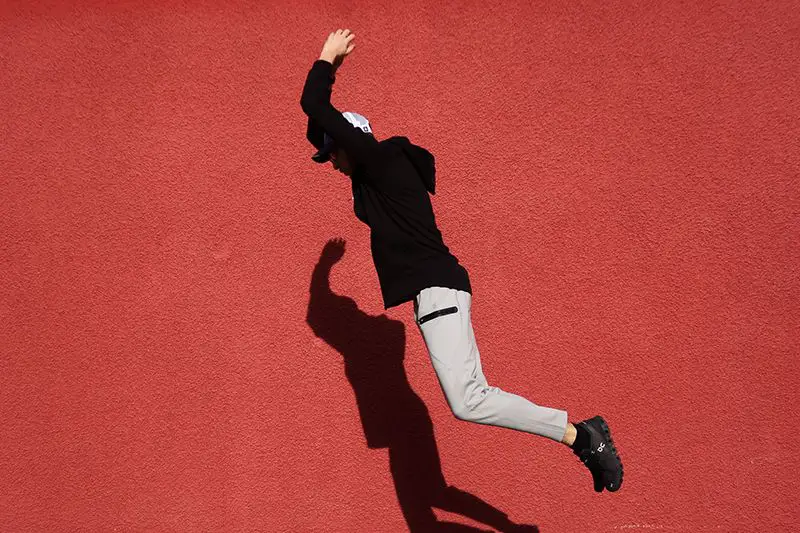
Strength training periodization
Triathlon strength training is not just lifting weights, though – there’s more to it. To maximize the adaptation effect the whole process has to be periodized. This helps athletes target specific improvements better and, therefore, optimize their training.
Periodization, essentially, means splitting the overall training plan into several phases, each with its own parameters – type of training, intensity, volume, rest intervals, etc. There are 5 distinct phases to choose from:
- Adaptation – building neuromuscular connection and preparing muscles & tendons for the work ahead
- Hypertrophy – growing muscle size. Not really relevant for triathletes, as it requires too much time to recover from
- Maximum strength – maximizing the force that athletes can produce
- Power – training the ability to maintain strength for longer (i.e. translating strength into muscular endurance). This is usually integrated with swim, bike and run training
- Strength maintenance – preventing loss of strength during the active season
Typically, endurance athletes start with adaptation phase (also known as strength & stability). From there they work on improving maximum strength to develop the absolute force muscles can produce. From there, triathletes might include a brief power phase (to improve the hill climbing ability, explosiveness or speed, for instance) and move into maintenance phase during the competition period.
I’ve shared on totalshape.com that strength training requires consistency to be effective. Without that, unfortunately, the periodization above will not work as well.
Read also: 12 Effective Strength Building Workouts For Any Experience Level
How to create a triathlon strength training plan for base period
Base period forms the largest part of the training process for triathletes, often covering 50% to 60% of the season. During this period athletes create foundation (hence the phase name) that helps them withstand extensive training & racing.
Most triathlon races (besides sprint distance) are over 2 hours long and, as a result, are 95%+ aerobic efforts. Which is why training muscles’ ability to utilize oxygen better will slow down accumulation of fatigue during races. Aerobic base training is the known way to achieve that, but it’s not the only one.
Strength and conditioning helps to create neuromuscular adaptations, promote mitochondria growth, improve the force athletes can generate and strengthen supporting muscles across the whole body. It’s a great way to break the monotony of long easy running and cycling.
Read also: How To Become A Better Athlete – 38 Practical & Useful Tips
The best approach for triathletes to include such training is to focus on bodyweight exercises. These are usually compound movements that engage a lot of muscle fibers across the whole body – from prime movers to stabilizing muscles. In addition to that they improve flexibility, mobility and range of motion. All of that contributes to better muscle economy, ability to apply more power and maintain good form for longer, which is crucial in half and full Ironman races.
Stabilizing muscles (hips, rotator cuff, etc.) are particularly important for athletes as they help to correct imbalance and prevent injuries.
Base period is perfect time for this kind of training. This early in the season athletes typically perform long sessions at low intensity which isn’t too taxing on the body. As a result, their recovery is quick and allows to include more strength and conditioning sessions.

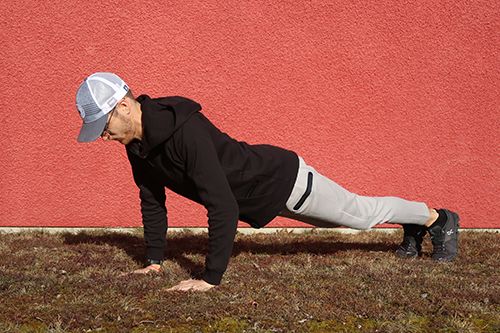
Strength training for triathletes in early base phase
Early base is a somewhat quick phase, typically lasting a couple of weeks. During this time athletes mostly gather mileage and prepare their bodies for more intense phases. Aerobically this means long low intensity sessions with some short bursts of speed.
The purpose of adaptation is not to build any power, but rather improve overall strength and get muscles used to exercising after a training break.
From strength and conditioning perspective, the most effective way to stimulate early adaptations is to perform many repetitions (between 20 and 30) with little or no rest in between exercises. This will make sure even the smallest stabilizing muscles are engaged. Think of it like a long easy run during which you gradually fatigue.
After a training break it’s important to regain mobility, so spend extra time on warmup and ensure you’re using full range of motion in strength exercises.
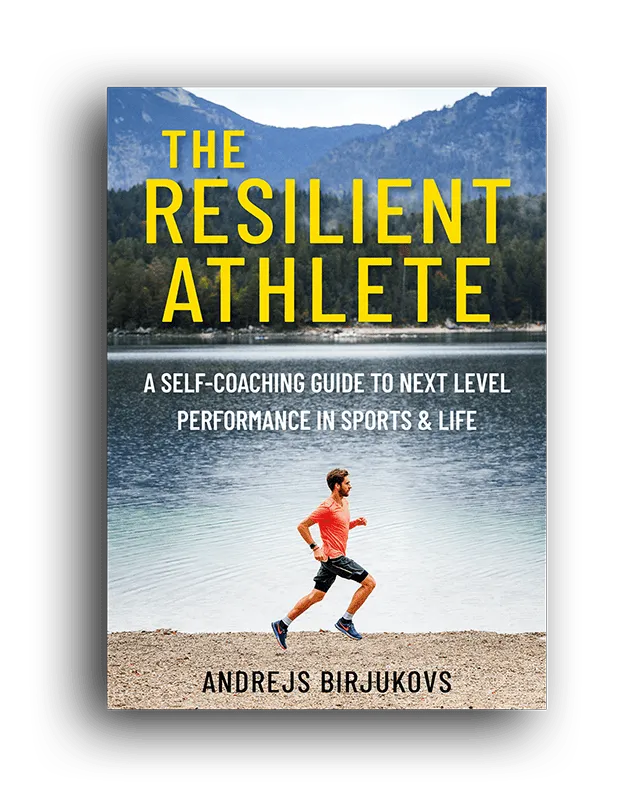
The Resilient Athlete
A Self-Coaching Guide to Next Level Performance in Sports & Life
Are you aiming to become a resilient athlete who is able to withstand any pressure? Be able to jump on any opportunity? Take any challenge life throws at you head on?
Then this book is for you.
Learn moreStrength training for triathletes in late (main) base
After preparing the muscles and joints with initial adaptations, athletes can proceed to a more explosive work.
The goal of this phase is to build maximum strength and stimulate further endurance adaptations. This is usually done by lifting heavy loads or doing intense exercise for a very short period of time (less than 10 seconds) with very long (around 5 min) rest intervals in between to avoid muscle exhaustion.
Long rest intervals between hard repeats prevent the accumulation of H+ ions (fatigue) and allow to complete more repetitions.
Short duration of the effort doesn’t allow muscles to reach exhaustion, while 5 minutes is enough to replenish energy (Creatine Phosphate or CP) spent on it. This approach allows the athlete to repeat the effort many times, which promotes mitochondria growth and stimulate endurance gains without adding too much fatigue.
These sessions aren’t very taxing on the body, because athletes don’t reach exhaustion – full recovery can be achieved within 24 hours. So, triathletes can include these 2-3 times per week, depending on their swim, bike and run training.
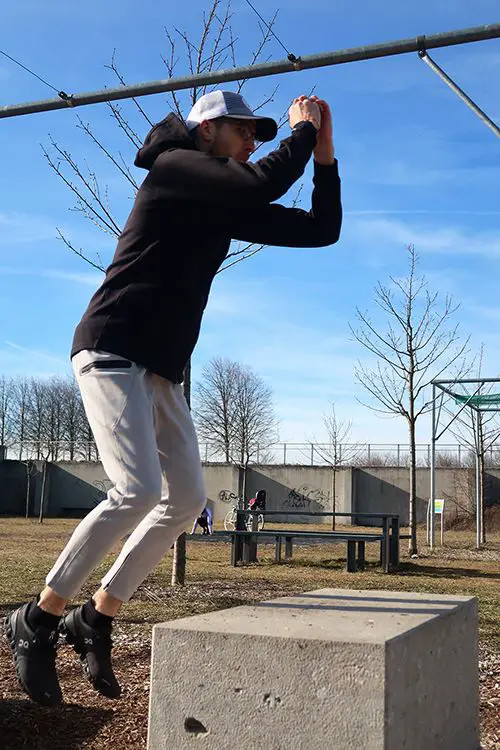
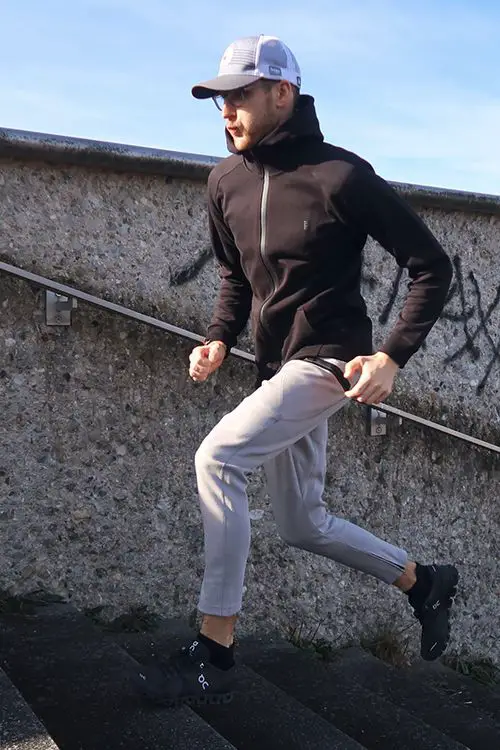
How about build and competition phases?
The purpose behind build phase is to grow muscular endurance and improve anaerobic fitness. Generally, it’s more relevant for power sports – like rowing or kayaking – where a race is shorter than 10 minutes. Build phase can improve triathlete’s power and ability to navigate hills better, but it’s best to incorporate this kind of training into running and cycling.
A power development strength session will require 2-3 days to fully recover from, which will decrease the effectiveness of swim, bike and run training.
Read also: Minimalist Ironman Training Program & Tips For Busy Triathletes
Strength building is taxing on the body, so base period is the only time when triathletes can fully focus on it. Typically, endurance athletes gain strength prior to the season and then gradually lose it due to extensive endurance sessions. However, it doesn’t have to be that way – recovery from a strength session in late base can take as little as 24 hours.
During the competition phase triathletes should aim to continue maintaining strength with the same approach to training as during the late base with particular focus on core exercises to reduce the risk of injury. A good practice is to have an easy plyometrics session once or twice a week, but no later than 3-4 days before the race.
Which exercises to include in the strength training plan for triathletes
To provide maximum effect, triathlon strength training should be balanced across the following elements:
- Movement quality to ensure the body functions as a whole and can produce coordinated and efficient movements. Requires the use of compound movement exercises (pushups, box jumps, etc).
- Flexibility and mobility to improve the Range Of Movement (ROM) of the joints and improve the ability to apply more force. Requires using full ROM during the exercise (i.e. deep squat)
- Strength and power to produce more powerful movements. Requires more resistance or harder variation of the exercise.
- Metabolic conditioning to improve the ability to maintain power for longer. Requires increasing speed of execution.
- Injury reduction to avoid being side-tracked during the hard training. Requires core and stabilizing exercises done at slow speed, as well as stretching.
It doesn’t matter whether an athlete is a runner or a kayaker. He or she needs to build strength across their whole body – not in one particular area. All muscles in the body are interlinked, so we never activate only one specific group.
Even runners actively use their arms to balance and control the cadence and kayakers use their legs to turn their torso and produce a more powerful stroke.
So, best strength and conditioning exercises are the ones from our childhood. Simple basic bodyweight movements that anyone can do.
| Lower body | Upper body | Core |
| Squats | Pushups | Plank variations |
| Lunges | Dips | Crunch variations |
| Single leg deadlifts | Pullups | Leg lifts |
| Box jumps | Burpees | Bird Dogs |
| Step ups | Rope (or pole) climbs | Mountain climbers |
| Skater hops | Resistance band rows | Glute bridges |
Bodyweight strength and conditioning workout for triathletes in base phase
My favorite strength and conditioning session is simple and doesn’t require any weights or gym access. The only thing you’ll probably need are some warm clothes to do it outside.
This session is organized in a circuit. Pick 3 exercises from each of the body groups above (9 in total) and spread them out so that none of the exercises from the same group go one after the other. It’s best to do lower body, then upper body, then core and repeat.
One circuit is 9 exercises – do 20 to 30 repetitions of each exercise without any rest in between. Take 2-3 minutes of rest between each of the laps and complete 2-3 laps in total. Choose the speed of execution and the variation of exercise so that you can complete it with energy left.
Use TRX and resistance bands as easier variations of hard exercises. For example, not many can complete 20 pullups with ease and are better off doing a TRX version of those.
- Exercises – 9 in total, 2-3 laps
- Repetitions – 20 to 30, but not until exhaustion
- Execution time – moderate to fast
- Rest interval – none (or minimal) between repetitions, 2-3 minutes between laps
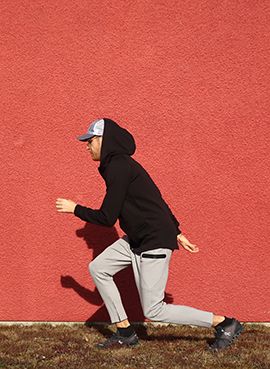
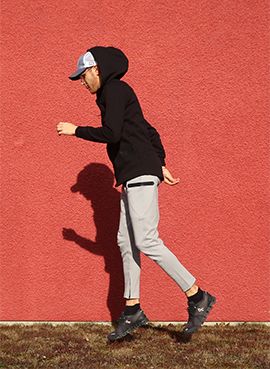
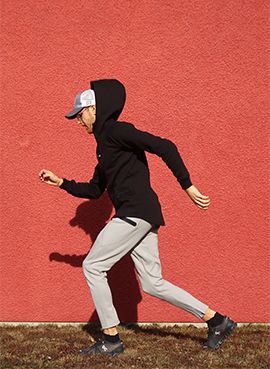
The whole session should take around 20-30 minutes. You can include it at any time, but it’s best after an easy session (like an easy 30-60 minute run).
Don’t forget to do a solid warmup before the session. As triathletes we’re often tight in sensitive areas (shoulders, hips, etc.) and putting more weight on those will force poor posture and promote overuse.
Read also: 9 Common Core Training Mistakes Athletes Make And How To Avoid Them
Session periodization
To adapt the session for early base period use easier variations of exercises to complete 20 – 30 repetitions with ease (i.e. knee pushups instead of regular ones).
During the late base period and competition phase the body is more adapted and is not sore after every session, so you can use harder variations of exercises. Increase the speed of execution or include a plyometric version of exercise (like box jumps instead of regular squats) to add explosiveness. Add a long rest period (around 5 minutes) in between exercises and reduce the amount of them to 3-5.
To adapt the session for build phase, instead of doing 20 – 30 repetitions, do 1 minute of intense work followed by 1 minute of rest. If the adaptation was good during early base, such short recovery between reps will be enough.
Did you find this information useful? Share the post with others using the buttons below.
Have an opinion? Share via links below and tag @theathleteblog
Andrejs Birjukovs
GET A FREE TRAINING PLAN
Subscribe to my email list and get access to a free 4-week “back in shape” training plan
You’ll also get two full-body strength sessions and some other goodies!
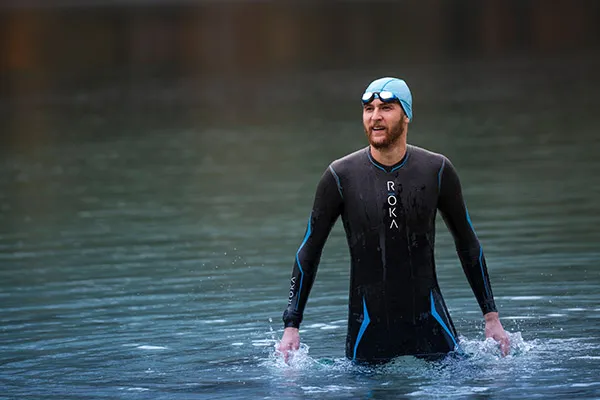
How did I get here?
Hey there! My name is Andrejs and I am here to inspire, entertain and get you fit for any adventure.
I went from being an over trained pro athlete to an endurance coach sharing how to listen to your body and live life to the fullest.
Traveling, new sports & activities brought new meaning to my training and made it much more effective, fun and enjoyable. And I'm here to help you do the same.
